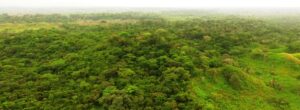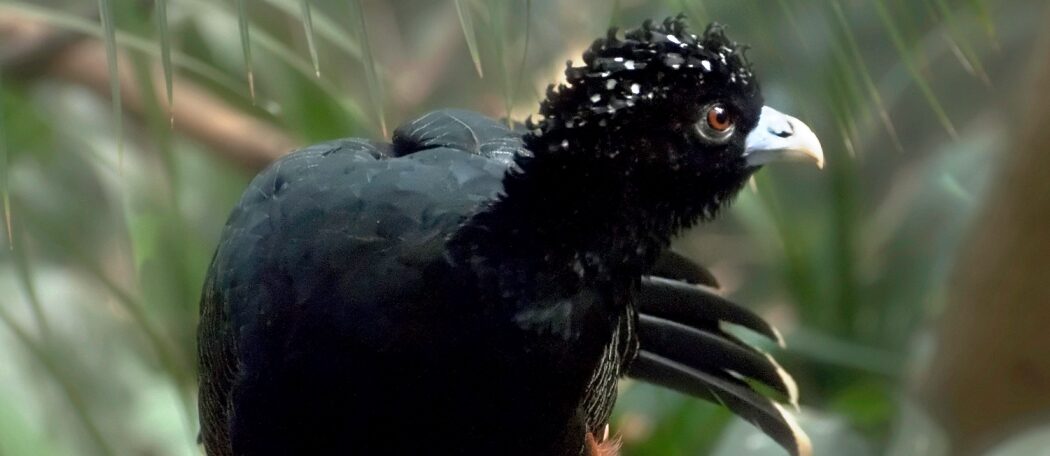In Colombia—the second-most biodiverse country in the world—the Middle Magdalena Valley is one of its most diverse regions. Not only is it critical habitat for migrating birds but it is also home for six primate, 345 bird, 42 amphibian and 723 vascular plant species.
In 2018, the non-profit Fundación Biodiversa Colombia created the 1470-acre Barbacoas Reserve at the center of the highly- fragmented Middle Magdalena Valley. Increased development led Fundación Biodiversa Columbia to partner with Rainforest Trust to seek expansion immediately by purchasing neighboring properties for sale.
In 2020, a Blue-billed Curassow was videotaped along a path bordering a forest restoration plot within El Silencio Reserve, raising hope that these birds now frequent recently restored habitat on former pasture lands.
“This is very exciting, not only because this proves the success of the restoration objective, but also because it is really close to the research station, which will allow us to study and observe the species more easily,” says Fernando Arbalaez, executive director of Fundación Biodiversa Colombia.
 Now, on January 15, 2021, Rainforest Trust—a non-profit based in Warrenton, Virginia—announced that 3839 acres in the El Silencio Natural Reserve the Middle Magdalena Valley, have been secured for conservation, reconnection and restoration.
Now, on January 15, 2021, Rainforest Trust—a non-profit based in Warrenton, Virginia—announced that 3839 acres in the El Silencio Natural Reserve the Middle Magdalena Valley, have been secured for conservation, reconnection and restoration.
In addition to Rainforest Trust and Fundación Biodiversa Colombia, other partners in the conservation alliance include World Land Trust, Saving Nature, and American Bird Conservancy. This has more than doubled the size of the reserve to 6844 acres. Additional assistance came from a partial voluntary compensation from the owner companies La Zebra and Tierra y Río.
Conserving and protecting this land is extremely important. Over 98% of the lowland rainforest in the Magdalena Valley has been destroyed for cattle ranching and illicit coca production. It is also under pressure from illegal logging. In addition to providing habitat for many rare species, the land has long been an important winter location for many migrating birds.
This latest land acquisition will allow protecting and connecting the two main forest patches in the area through wildlife corridors, which will result in the creation of the largest connected forest extension in the lowlands of the Middle Magdalena Valley in Colombia.
This habitat is of great importance to the critically endangered Brown Spider Monkey (one of the rarest primates on earth) and Blue-billed Curassow, as well as three other threatened and endemic monkey species, Lowland Tapirs, large cats including Jaguar, more than 300 bird species, endangered hardwood trees, and other wildlife.
In addition, the reserve’s wetlands and riparian forests are important for the Magdalena River Turtle, American Manatee, American Crocodile, and fish species of great economic value to local communities. These same riparian forests at El Silencio are key wintering areas for Prothonotary Warblers, which nest in the eastern United States.
In research published in The Condor: Ornithological Applications in 2019, Christopher Tonra at The Ohio State University and colleagues analyzed geolocator tag data from Prothonotary Warblers and found that most of these recovered bird populations wintered in the area of Colombia’s Magdalena River Valley.
All photos courtesy of Rainforest Trust. Featured photo shows Blue-billed Curassow.

